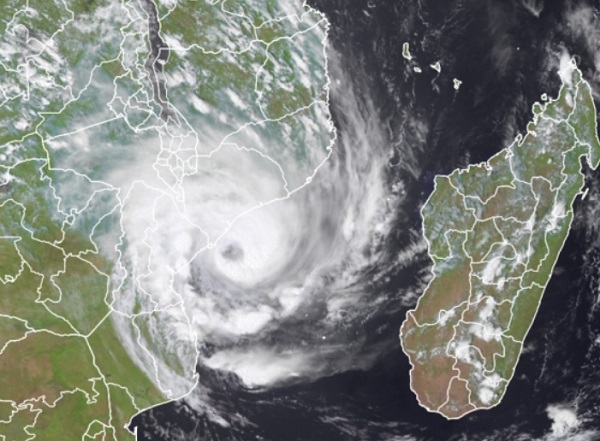United Nations, (Samajweekly) The UN Office for the Coordination of Humanitarian Affairs (OCHA) said that it was supporting governments in southern Africa to prepare for and respond to tropical cyclone Eloise, which is expected to bring with it heavy rainfall, storm surge and flooding.
The cyclone is expected to make landfall near Beira in central Mozambique on Saturday morning, according to the World Meteorological Organization (WMO), the UN’s authoritative voice on weather, climate and water.
This is the same area that was hit by cyclone Idai less than two years ago, reports Xinhua news agency.
In a tweet on Friday night, the WMO said: “Tropical Cyclone #Eloise is intensifying and is forecast to make landfall overnight at Category 2 strength near Beira, Mozambique.
“High winds, heavy rainfall, storm surge, flooding. Widespread humanitarian impacts in an area still recovering from Idai.”
The UN is concerned about the prospect of significant flooding, particularly in Mozambique, where rivers are already on alert levels and flooding has been reported in several locations ahead of Eloise’s landfall, said OCHA.
The government of Mozambique is carrying out evacuations and the UN and its partners have deployed personnel and supplies in advance to be ready to respond quickly, it said.
After its landfall in Mozambique, the cyclone is expected to weaken but could bring heavy rains to neighbouring countries, including Zimbabwe, South Africa and Botswana, said OCHA.
More funding will be urgently needed to respond to this new crisis.
Humanitarian organisations in the region are already overwhelmed by ongoing operations, especially in Mozambique and Zimbabwe, it said.
After it made landfall in early 2019, Idai became one of the worst tropical cyclones on record to affect Africa and the Southern Hemisphere.
It caused catastrophic damage, and a humanitarian crisis in Mozambique, Zimbabwe, and Malawi, leaving more than 1,300 people dead and many more missing.
Idai was also the deadliest tropical cyclone recorded in the South-West Indian Ocean basin.










